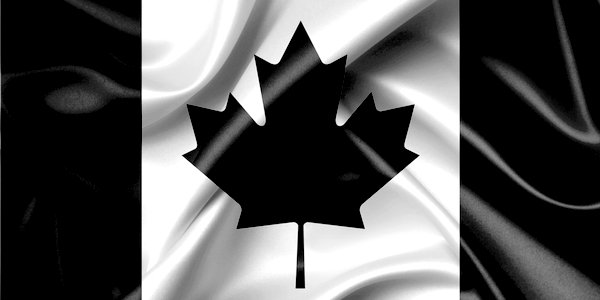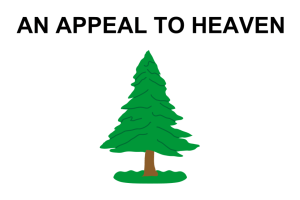THREE days before Americans celebrate Independence Day on July 4, Canadians break out the fireworks and flags to mark Canada Day. Four years ago, after a small indigenous group in British Columbia announced that the remains of 215 children had been discovered in the grounds of a former residential school for indigenous people, Canada Day was all but cancelled.
The indigenous residential school system – comprising 80 industrial schools, boarding schools and student hostels at its peak – operated from 1883, when the federal government began to fund church-founded missions. Up to 150,000 children, representing fewer than a third of the indigenous child population, attended such schools for a year or two until the last closed in 1997. Several thousand died of illnesses including TB, especially in the early part of the 20th century when such diseases were rife.
In the weeks following the shocking announcement about Kamloops Indian Residential School, then Prime Minister Justin Trudeau ordered the Canadian flag to be flown at half-mast on all federal buildings. On the eve of Canada Day 2021, Trudeau tweeted that he had asked that the flag remain lowered for Canada Day ‘as people across the country continue to honour the indigenous children whose lives were taken far too soon, and as we reflect on the tragedy of residential schools’. The flags would remain lowered for nearly six months.
There were other public manifestations of national shame. Many churches set out 215 pairs of child-size shoes on their front steps. Canada was covered that summer by a pall of grief.
What a contrast to this year’s festivities. With nary a word about residential schools or unmarked graves, newly elected Prime Minister Mark Carney told Canadians in his Canada Day message that ‘this is the greatest nation on earth’. In neighbourhoods across the country, the Maple Leaf was displayed in windows, porches and flag poles. What had changed in the years since the announcement about Kamloops Indian Residential School (IRS)?
After the bombshell press release, indigenous Chief Rosanne Casimir qualified that what had been identified by ground-penetrating radar (GPR) technology were not 215 ‘remains’ but 200 ‘potential burials’. Yet in spite of the provision of $12.1million for field work and exhumation of remains, no remains have ever been recovered.
Some government funding streams and commissions have now come to an end. The National Advisory Committee on Residential Schools, Missing Children and Unmarked Burials has been disbanded. Parks Canada announced that the site of the former Kamloops Residential School would become the fifth former IRS to be designated a national historical site. Though the press statement called the school the ‘largest institution in a system designed to carry out what the Truth and Reconciliation Commission described as cultural genocide’, no mention was made of unmarked or mass graves.
But despite the dismantling of the hastily erected bureaucratic structures, the assumptions and prejudices, even the so-called facts, of that period have become embedded into the national consciousness and are now almost impossible to root out. Which makes the neo-patriotism of the last few months so bizarre.
The conversation has now shifted away from mass graves, of which there was none, to the denouncement and criminalisation of something called ‘residential school denialism’.
In October 2024, after two and a half years of work, the Independent Special Interlocutor for Missing Children and Unmarked Graves and Burial Sites associated with Indian Residential Schools, Kimberly Murray, released a two-volume report that focused more on denialism than the identification of unmarked graves.
The executive summary of the Indigenous-led Reparations Framework uses the term ‘denialism’ 50 times and ‘genocide’ 72 times. The report repeatedly asserts that what occurred in indigenous residential schools was genocide.
The summary calls for reparations for the families of residential school students, an indigenous-led national commission with a 20-year mandate to investigate missing children associated with residential schools, and for the government to refer to missing children as victims of ‘enforced disappearance’.
It is important to note that former residential school students were the beneficiary of the largest class action settlement in Canadian history. In 2006, some $3.18billion (£1.7billion) in payments were approved, the average being $111,265 (£60,000).
The report also recommends making ‘residential school denialism’ an imprisonable offence. Denialism is defined in the report as ‘condoning, denying, downplaying, or justifying the Indian Residential School System or by misrepresenting facts relating to it . . . It is not the existence of the Indian Residential School System that is being denied: it is the intent, outcomes, and impacts of the System’.
At the National Gathering on Unmarked Graves, a two-day conference at which the report was presented, speakers were seated on a raised stage. At the front was a display of Indigenous objects: cradleboards, moccasins, and in the middle, a drum with the number ‘215’ at the centre. It was a curious choice. By October 2024, Chief Casimir had long since qualified it was 200 ‘anomalies’ not 215 ‘remains’.
I asked Noah MacDonald, Archdiocese of Toronto canon lawyer and member of the Michipicoten First Nation, why he thought the number 215 had moved beyond a data point to an emotive symbol.
‘I see hanging on to those symbols and language because it’s reminiscent of a moment in Canadian history when Indigenous people were believed. The whole world paid attention to the million problems we’ve been trying to express.’
The report stresses that the truth of residential schools is to be found solely in the memories of survivors, including accounts of babies conceived in rape being murdered. It says: ‘Survivors attest to the bodies of babies being placed in incinerators at Indian Residential Schools. These testimonies and oral history evidence hold veracity and truthfulness given the extent of corroboration and repetition among survivors of the same institution and across many different Indian Residential Schools in the country.’
When I questioned MacDonald on this focus upon memory, rather than data, he responded that for many indigenous communities it was important to focus less on the ‘implicit facts, but more on the spirit of truth . . . Regardless of whether a baby was incinerated there, the souls and the persons of young indigenous children were incinerated there, incinerated by this process of assimilation.’
Indigenous communities and opinion are, of course, not a monolith.
Eight days before the OISI report was published, Fr Cristino Bouvette, priest of the Diocese of Calgary, sat down with YouTuber and Catholic speaker Ken Yasinski for a conversation on the ‘mass graves controversy’.
Of mixed Cree, Métis and Italian heritage, Bouvette has the credentials to speak to so-called residential school denialism. His grandmother attended the Edmonton Indian Residential School for 12 years. Chosen to act as the National Liturgical Co-ordinator for the visit of Pope Francis to Canada in 2022, Bouvette says he has ‘spent the last four years of my life and ministry completely consumed’ by the question of reconciliation.
Bouvette told Yasinski: ‘This is something I feel very confident I can stand in the face of . . . the whole concept of residential school denialism. How can I deny what my grandmother lived through? Who can accuse me of denying that?
‘Asking questions isn’t denying anything. If we are not seeking the truth, if we are not trying to understand all of what surrounds what’s happened here, we will never get anywhere. What’s the point of a Truth and Reconciliation Commission if we leave the truth off? You can’t have reconciliation without truth.’
Which brings us back to Mark Carney, the big, beautiful country of Canada, and the collective amnesia that the entire nation was in mourning four years ago because the former prime minister, his ministers and the media told Canadians their country was the very opposite of the ‘greatest nation’. Such amnesia, so easily slipped into, does not bode well for the process of either reconciliation or truth.









